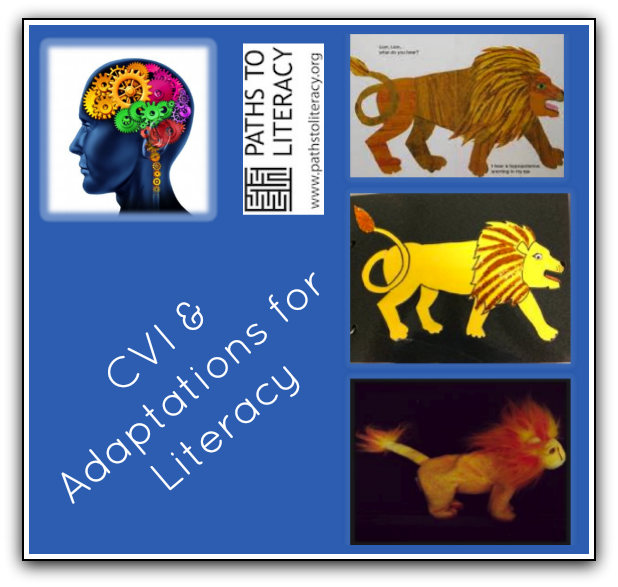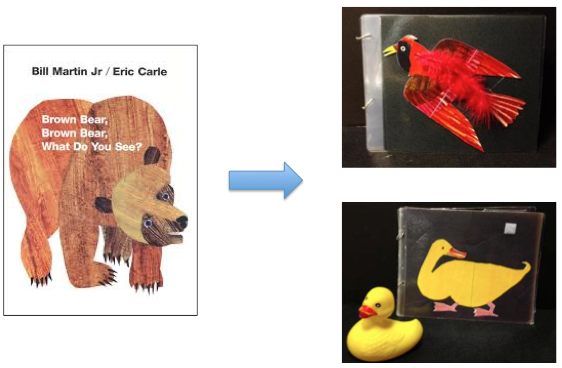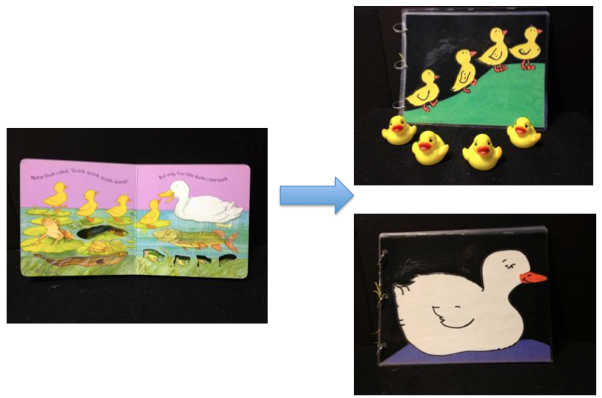CVI and Adaptations for Literacy
Submitted by Charlotte Cushman on Aug 04, 2014
A group of teachers in the Deafblind Program at Perkins School for the Blind presented an hour-long webinar on various aspects of literacy for children with deafblindness: Literacy Adaptations for Students Who Are Deafblind with Christa Hulburt, Ira Padhye, Megan Connaughton, and Marguerite Bilms.
Cortical Vision Impairment & Adaptations For Literacy
by Marguerite Bilms, M.Ed

CVI Overview
Neurological condition where vision impairment is caused by abnormalities in the brain and visual processing.
Coexisting ocular conditions may be present
Where Do We Start?
- Identify
- Assessment
- Intervention
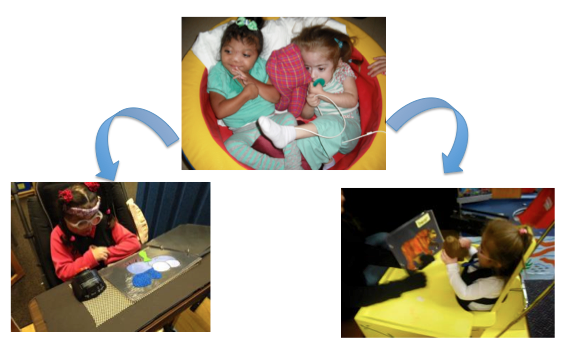

CVI Range: Overview
1-2: Student functions with minimal visual response.
3-4: Student functions with more consistent visual response.
5-6: Student uses vision for functional tasks.
7-8: Student demonstrates visual curiosity.
9-10: Student spontaneously uses vision for most functional activities.
Characteristics of CVI & Impact on Literacy
Classroom Enviornments - Accommodating a Learner with CVI

 Enviornmental Accomodations
Enviornmental Accomodations
- Controlled Lighting
- Controlled Noise
- Low Complexity
- Be conscious of glare on materials
Materials
- Black shower curtains
- Black curtains
- Black foam board
- Velcro
Educator Accomodations
Be aware of what you wear
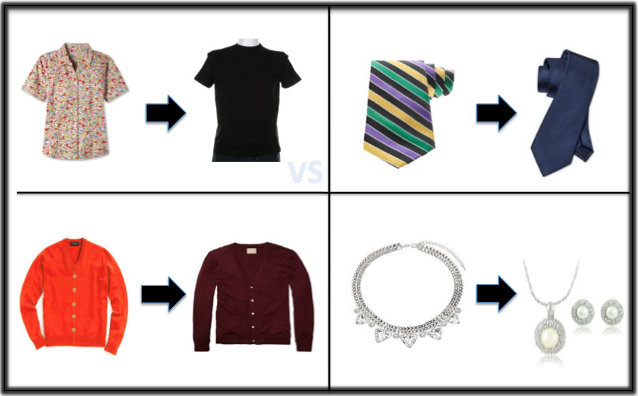
You can still be stylish!

Adapting Books
- Main Concept of Page (lion)
- Scan, Cut, Internet, Draw (drawn)
- Simplify (removal of line shading on lion)
- Low Complexity (yellow on black)
- High Contrast (bright paper on black background)
- Focus on Consistent Vocabulary ("lion", "yellow", "roar": combinded or isolated)
- Create a Story Box (add concrete objects and / or tactile components)
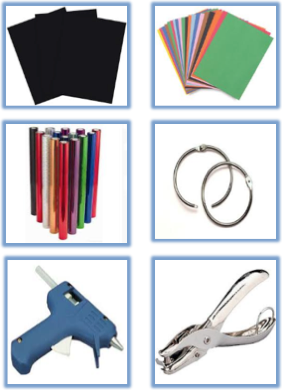
Some Suggested Materials
- Construction Paper (Black for background, color for pictures)
- Mylar (shiny, reflective) (Gift bags, wrapping paper etc.)
- Lamination Sheets or Poster Board (Be aware of glare)
- Binding Rings
- Hole Punch
- Hot Glue
- Tactile Components
Remember ... Be Creative!
References
Roman-Lantzy, C. (2007). Cortical Vision Impairment: An Approach to Assessment and Intervention. AFB Press.
